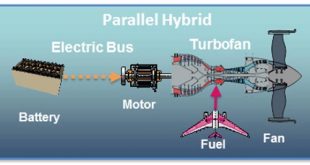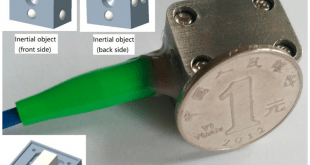Humanitarian Crisis scenarios occur frequently and they typically require immediate rescue intervention. In many cases, the scene conditions may be prohibitive for the human rescuers to provide instant aid, as they have to act within hazardous conditions, like collapsed buildings, air-poisoned, or radioactive environments. Many organizations and research teams are …
Read More »Hybrid-Electric Propulsion for Military aircraft to power radars to laser weapons payloads
The civil global aviation market has experienced considerable economic growth in recent years and will keep increasing. It is estimated that around 1300 new international airports will be required, and the commercial aircraft fleet will double by 2050, with a projected passenger throughput of 7.2 billion in 2035. This growth …
Read More »Real-time Digital Signal Processing for Electronic Warfare Systems
The advancement of Sensors, Communications and Radars have given rise to Electronic Warfare, which encompasses, in all battle phases, military actions involving the use of EM energy to determine, exploit, reduce or prevent hostile use of EM spectrum and the actions, which retain friendly use of the EM spectrum. Understanding …
Read More »Growing India Australia strategic partnership Amid China threat
The aggressive China policy, growing PLA Navy presence from the South China Sea to the Indian Ocean have led to a greater understanding and formation of Quad among the United States, India, Japan, and Australia, proclaiming their commitment to the “free and open Indo-Pacific” vision. Longstanding India–China boundary …
Read More »Armed Crop Dusters for Security and Military Missions
A crop duster, is usually, an aircraft used for dusting or spraying large acreages with pesticides. Aerial spraying and dusting permit prompt coverage of large areas at the moment when the application of pesticide is most effective and avoid the need for wheeled vehicles that might damage crops. Agricultural …
Read More »Electric Vehicle Charging Infrastructure Market
A typical passenger vehicle emits about 4.6 metric tons of carbon dioxide per year. This assumes the average gasoline vehicle on the road today has a fuel economy of about 22.0 miles per gallon and drives around 11,500 miles per year. Every gallon of gasoline burned creates about 8,887 grams …
Read More »Fiber Bragg Grating (FBG) Accelerometer
Over the past decade, the proliferation of fiber optic sensors and sensing systems has been ever-increasing, especially the use of fiber Bragg grating (FBG) based sensors. The fiber optic sensors also called as optical fiber sensors use optical fiber or sensing element. These Sensors can measure a large variety of parameters, …
Read More »Healthcare data and Analytics
The healthcare sector is seeing immense growth worldwide, and the USA is no exception to the phenomena. Healthcare takes more than 10% of the GDP of most developed countries. In fact, for the USA, this figure will be close to 18% by the end of 2019. This isn’t surprising—the healthcare sector …
Read More »Integrated Air and Missile Defense (IAMD) protect against full spectrum of threats
Militaries around the world are increasingly facing a formidable strategic and threat environment in terms of complexity, lethality, range, sophistication, and number of threats. These range from Fifth-generation stealth fighters, cruise and ballistic missile and unmanned air vehicle technology that are becoming widely proliferated to become more accessible to emerging …
Read More »DARPA SMOKE to automate cyber red teaming or penetration testing to uncover military systems vulnerabilites
Cyberattacks are being conducted daily on any type of target, and any notion that a state of full cyber security can be reached is a mere illusion. Cybersecurity is about managing risks and to ascertain that, to a certain extent, proper procedures and adequate security measures are being taken. Exposed …
Read More » International Defense Security & Technology Your trusted Source for News, Research and Analysis
International Defense Security & Technology Your trusted Source for News, Research and Analysis



